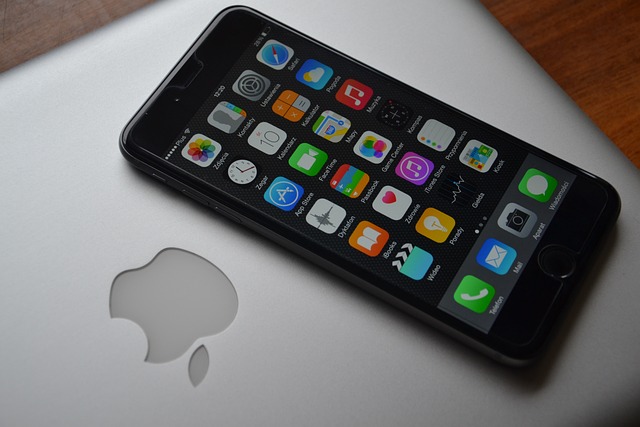When deciding to replace your iPhone battery, consider that while official Apple Service offers a guaranteed authentic part with a warranty, it comes at a higher cost compared to third-party services ranging from DIY kits starting at $20 to local repair shops charging between $40 and $150. If your iPhone is under warranty or covered by AppleCare+, the out-of-pocket expense for a battery replacement can be significantly lower or even free. It's important to weigh the cost against the quality of service, considering that frequent battery replacements might equal the expense of purchasing a new phone over time. To extend your iPhone's battery life and potentially avoid an early replacement, adopt energy-efficient practices such as dimming your screen, enabling low-power mode, managing app usage, and protecting your device from overheating. These habits can help you get the most out of your iPhone's battery, thereby reducing the need for costly replacements and contributing to a more sustainable approach to technology use.
When an iPhone’s battery life wanes, many users consider replacing the battery to extend their device’s lifespan. This article explores the costs associated with iPhone battery replacements, offering insights into official Apple services and third-party alternatives. We analyze pricing across various models, delve into long-term financial implications, and provide expert tips on maintaining optimal battery health. Understanding each aspect of an iPhone battery replacement can help users make informed decisions, balancing cost, convenience, and the longevity of their devices.
- Understanding the Need for an iPhone Battery Replacement
- Cost Analysis of iPhone Battery Replacement Services Across Models
- Apple's Official Battery Replacement Service Rates and Policies
- Third-Party Battery Replacement Options and Their Pricing
- Additional Considerations When Replacing an iPhone Battery
- Long-Term Cost Implications of Regular iPhone Battery Maintenance
- Tips for Extending iPhone Battery Life to Minimize Future Replacements
Understanding the Need for an iPhone Battery Replacement

When an iPhone’s battery performance starts to wane, it becomes increasingly important to consider a replacement. Over time, lithium-ion batteries naturally degrade, leading to reduced functionality and efficiency. This decline can manifest as shorter battery life between charges, unresponsive devices during critical moments, or even the inability to power on the device at all. Recognizing these signs early is crucial for maintaining the performance and usability of your iPhone. Replacing an iPhone battery not only extends the lifespan of your device but also enhances user experience by ensuring consistent and reliable power supply. The cost of an iPhone battery replacement varies depending on factors such as the iPhone model, the service provider, and whether the phone is still under warranty or AppleCare+ coverage. For instance, replacing an iPhone 8 battery might be more affordable than for an iPhone XS Max. It’s a smart investment that can prevent data loss and save money in the long run by avoiding the need to purchase a new device prematurely. When opting for third-party services, it’s essential to select reputable providers to avoid potential issues with battery compatibility and quality. Apple’s official battery replacement service, on the other hand, offers a guaranteed level of quality and is often covered under warranty or can be accessed through an AppleCare+ plan, providing peace of mind for iPhone users. Understanding the need for an iPhone battery replacement is not just about extending the phone’s life but also ensuring its efficiency and reliability, which are paramount for everyday use.
Cost Analysis of iPhone Battery Replacement Services Across Models

The cost of replacing an iPhone battery can vary significantly across different models, with each generation presenting its own set of pricing considerations. For instance, the latest iPhone models often feature advanced batteries with more capacity and efficiencies that come at a higher expense when replaced. Traditionally, Apple offers battery replacement services directly through its stores or authorized service providers. These services are typically priced at a fixed rate, which as of recent updates, is around $69 for most models, although this fee can differ based on the model and location. For example, older models like the iPhone 8 or iPhone 8 Plus may have a lower service fee compared to the newer iPhone 13 series. It’s important for consumers to consider these costs when evaluating the longevity and maintenance requirements of their devices. Independent repair shops also provide this service, but prices can fluctuate due to market conditions and regional differences. When comparing costs, it’s crucial to not only look at the immediate replacement fee but also factor in any additional charges that may arise from the service, such as parts or tax fees, which can affect the overall cost of the battery replacement. Consumers looking to replace their iPhone battery should weigh these financial considerations and compare options to ensure they make an informed decision that aligns with their budget and device needs.
Apple's Official Battery Replacement Service Rates and Policies

Apple offers an official battery replacement service for iPhones, which can be accessed through Apple Stores, Apple Authorized Service Providers, or by mail. The cost of replacing an iPhone battery varies depending on the model of the iPhone and the location of the service. Typically, out-of-warranty battery replacement for newer models like the iPhone 13 or later can range from approximately $69 to $99. For older models, such as the iPhone 8 or earlier, the price may be lower, often around $49 to $69. It’s worth noting that pricing can differ by region and over time, so it’s always best to check with Apple or an authorized service provider for the most current rates.
In addition to the cost, Apple has policies in place regarding battery replacements. These include a requirement that the iPhone be functioning properly otherwise, additional issues may need to be addressed before the battery can be replaced. Moreover, if your iPhone is covered by AppleCare+ or consumer law, there may be different terms and costs associated with the service. Apple’s policies are designed to ensure that customers receive genuine parts and skilled service when replacing an iPhone battery, which helps maintain device performance and longevity. Replacing an iPhone battery through Apple’s official service is a reliable way to extend your device’s life and improve its efficiency without having to replace the entire phone.
Third-Party Battery Replacement Options and Their Pricing

When considering the costs associated with iPhone battery replacement, consumers have the option to opt for third-party services. These alternative providers offer varying degrees of service, ranging from DIY kits for those comfortable with a little hands-on work to full-service replacements by certified technicians. The pricing for third-party iPhone battery replacements can vary widely based on several factors, including the type of iPhone model, the quality of the replacement battery, and the service provider’s reputation. For instance, a local repair shop might charge anywhere from $40 to $150 for an out-of-warranty iPhone battery replacement, which is generally less expensive than the official Apple Service or AppleCare+ plan. On the other hand, DIY kits can be found online for as low as $20, providing all the necessary components and instructions for those who wish to replace their iPhone battery themselves. It’s important to weigh the pros and cons of each option, considering factors such as warranty, expertise, and cost when selecting a third-party service for iPhone battery replacement.
Additional Considerations When Replacing an iPhone Battery

When considering a replacement for your iPhone battery, it’s pivotal to weigh several factors beyond the cost of the service itself. The authenticity of the battery is a primary concern; opting for an original manufacturer (OEM) battery generally ensures optimal performance and longevity. Additionally, the type of battery replacement—whether it’s for capacity reasons or due to a swollen battery that may have caused physical damage to other components—can affect the overall cost. For instance, a standard battery replacement might be less expensive initially but could lead to additional repairs if the battery has degraded significantly and compromised the device’s functionality. It’s also crucial to consider warranty status; if your iPhone is still under warranty or eligible for AppleCare+, the service fee may be reduced or covered. Consequently, factoring in these additional considerations can help you make an informed decision and potentially save money in the long run when replacing your iPhone battery.
Long-Term Cost Implications of Regular iPhone Battery Maintenance

When considering the long-term financial implications of owning an iPhone, regular battery maintenance emerges as a significant factor. Replacing an iPhone battery typically involves a cost that varies depending on the model and where the service is performed—whether it’s through Apple itself, authorized service providers, or independent repair shops. For instance, as of the latest models, Apple officially offers out-of-warranty battery replacement services ranging from approximately $69 to $99, with prices potentially higher for more advanced models. This cost is a one-time fee, but it’s important for users to calculate this expense over the entire lifespan of their device, as battery health degrades over time and can significantly impact performance.
Owners who prioritize prolonging their iPhone’s lifespan may find that the cumulative cost of periodic battery replacements is comparable to, if not more than, the cost of purchasing a new phone every few years. This financial planning is crucial for budget-conscious consumers and those who prefer to minimize electronic waste. By regularly replacing the iPhone battery, users can maintain optimal device performance without resorting to upgrading their handset as frequently. It’s advisable for individuals to weigh the initial outlay of a new battery against the benefits of a longer-lasting phone, which includes not only cost savings but also the convenience and familiarity with a device that has all their settings, apps, and data intact.
Tips for Extending iPhone Battery Life to Minimize Future Replacements

To maximize your iPhone’s battery life and potentially avoid replacement for a longer period, adopting energy-efficient habits is key. Dimming the screen when not in use can significantly reduce power consumption. Additionally, enabling low-power mode before your device reaches a critical battery level ensures that your iPhone conserves energy as much as possible. Regular updates to your iOS are crucial for optimizing battery performance; make sure your phone’s software is up to date. Apps often consume a considerable amount of battery, so closing those you aren’t using and deleting ones that are seldom used can help maintain battery health. Lowering screen brightness, managing app permissions to minimize data syncing in the background, and disabling push notifications for apps that send them frequently can further extend your iPhone’s battery life. Investing in a high-quality protective case and ensuring your iPhone is well-ventilated while charging can also prevent overheating, which is detrimental to battery longevity. By integrating these practices into your routine, you can effectively prolong your iPhone’s battery life, potentially reducing the need for an iPhone battery replacement.
When considering the replacement of an iPhone battery, it’s clear that costs can vary significantly based on the model and whether one opts for Apple’s official service or a third-party provider. This article has examined the need for iPhone battery replacements, analyzed the associated expenses across different models, and delved into Apple’s service rates alongside alternative options available to consumers. It’s evident that regular maintenance and timely replacements can mitigate long-term costs, as detailed in our discussion on extending battery life. For those looking to replace their iPhone battery, it’s crucial to weigh the costs against the convenience and quality of service each option presents. Ultimately, informed decision-making will guide users to a choice that aligns with both their budgetary constraints and their device’s longevity.
